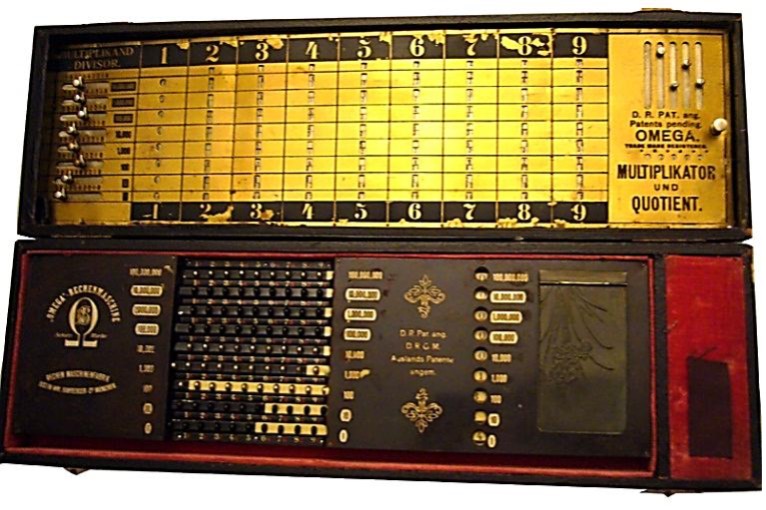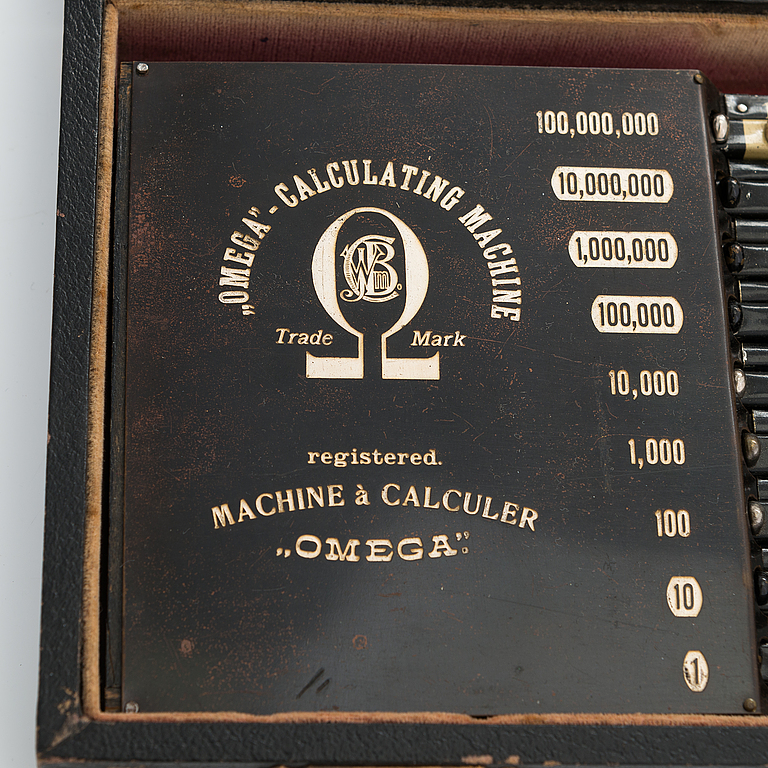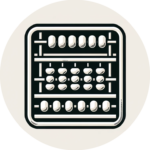OMEGA, 1903
Inventor
OMEGA & Co
Invention date
Unknown
Manufacturing date:
1903-1906
Manufacturing location
Munich (Germany)
Manufacturer
Justin WM. BAMBERGER & Co
Dimensions
L 47 W 14 H 6
Reference Number
250

History and Functionality
This instrument was manufactured between 1903 and 1906. It has a very neat layout and includes a compartment for storage. Probably dedicated to accountants, it is divided in two parts:
- One part is dedicated to addition and subtraction that are performed by sliding 9 strips, which enables the processing of numbers from 1 to 100,000,000. The principle is similar to that of a straight adder. Color data identifies the direction in which it is necessary to slide the strips. The ten-carry operation is not automatic and involves action by the operator.
- The upper part is dedicated to multiplication and division. 8 strips slide longitudinally. Numbers from 1 to 10,000,000 can be processed. Once the multiplicand is registered on the left part of the machine, the result of multiplying by a digit appears in the column of that number. The operator has to make intermediary additions like with Napier Rods to get the final result.
About The Inventor
OMEGA & Co, not as widely known in the annals of computational history as some individual inventors, made a notable contribution with their creation, the OMEGA machine. This machine, emerging in the early 20th century, was a significant development in the field of mechanical calculators.
The OMEGA machine was designed to perform a variety of arithmetic operations, including addition, subtraction, multiplication, and division. What set the OMEGA apart from many of its contemporaries was its sophisticated mechanism and user-friendly design, making complex calculations more accessible and efficient. This ease of use, combined with its reliability and accuracy, made it a valuable tool for businesses and scientific communities that required precise and rapid calculations.
OMEGA & Co’s approach to the design and functionality of the OMEGA machine reflected the technological advancements of the era and the increasing demand for efficient computational tools. The company’s contribution through the OMEGA machine is a testament to the era’s collaborative and corporate efforts in advancing computational technology, differing from the more individual inventor-driven advancements in earlier periods.
The OMEGA machine, while perhaps not as celebrated as some other inventions in the history of computing, played a crucial role in the evolution of mechanical calculators. It exemplifies the transition from manual to semi-automated computation, paving the way for the more advanced electronic calculators and computers that would follow in the mid-20th century.
OMEGA & Co’s work represents an important chapter in the broader narrative of the development of computational devices.

